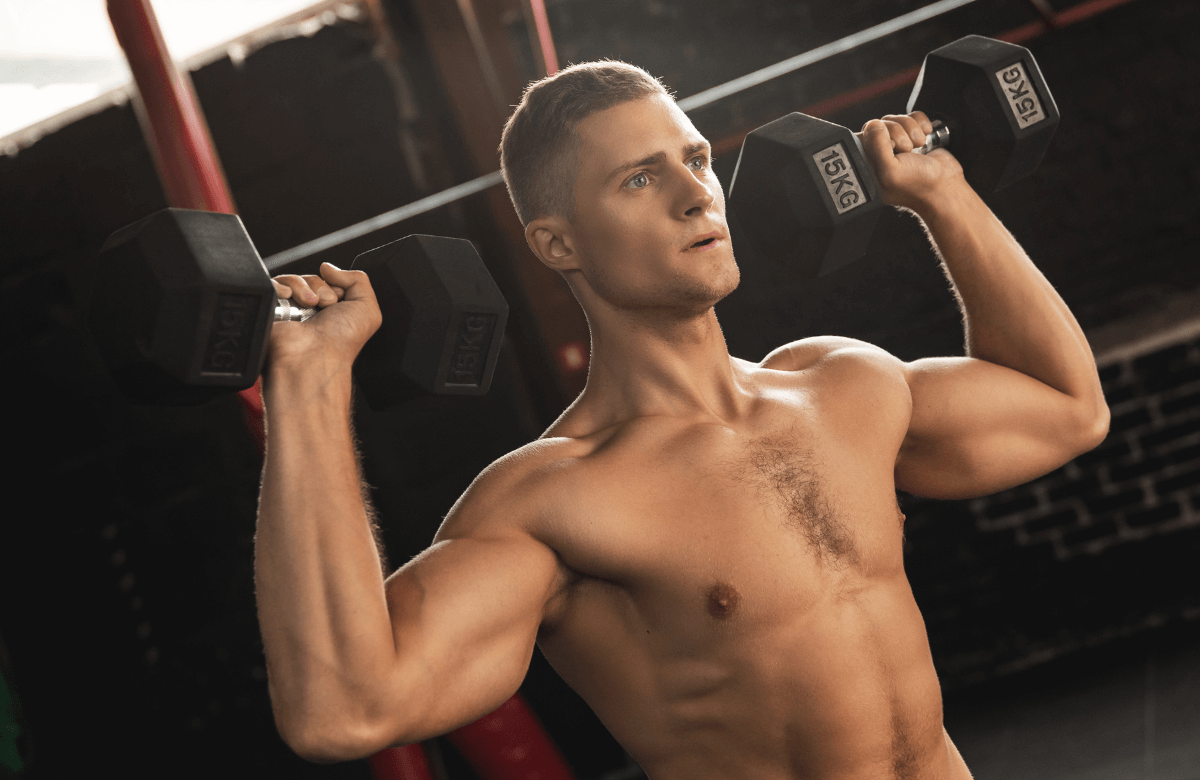Arnold Schwarzenegger is the definition of boulder shoulders. Beloved by many and on the poster of countless walls, the world-class bodybuilder invented the Arnold Press to train his shoulders.
But is the Seated Arnold Press just a gimmick, or does it have genuine advantages for building a sleeve-popping upper body?
We cover everything you need to know about incorporating the Seated Dumbbell Arnold Press into your routine, the benefits, variations, and common mistakes to avoid. Read on for more information.
Jump to:
What Is the Seated Arnold Press?
The Seated Arnold Press is a variation of the traditional dumbbell shoulder press exercise named after the famous bodybuilder himself.
The 19-time bodybuilding competition winner, Arnold Schwarzenegger, created the compound exercise to activate all three heads of the deltoid muscles (anterior, medial, and posterior heads).
The movement has a greater range of motion, activating the entire shoulder alongside the triceps and upper back muscles for support.
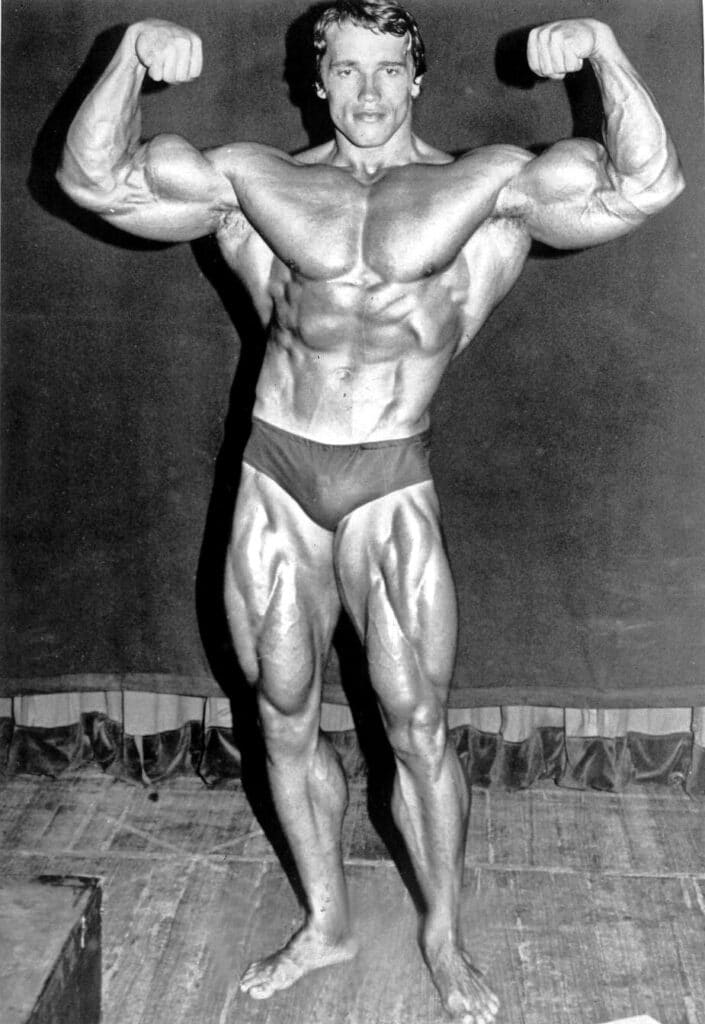
How to Perform the Seated Arnold Press
It’s possible to perform the Arnold Press sitting down on a weight bench or standing. You can also use an adjustable bench or incline bench, which engages the upper chest more than the standing variant.
- Sit down on the weight bench with a dumbbell in both hands. Grip the weights in front of the body at roughly face level. Your palms should be facing toward you.
- Now, press the dumbbells directly over your head. As you press the weight, rotate the wrists so your palms face away from the body at the top of the exercise.
- Once your arms are fully extended, carefully lower the weight back to the starting position. Rotate the wrists so they face toward the body at the end of the movement.
- This is one repetition. Repeat the movement for your desired rep range.
Muscles Worked
Like other overhead movements, the Arnold Press primarily targets the shoulder muscles. It’s a complete shoulder exercise, engaging all three heads of the deltoids, using the triceps and upper back for support.
The Deltoid Muscles
The Arnold Press can help you achieve all-around shoulder mass, as it engages all three heads of the deltoid.
The delts are a significant muscle in the shoulder, playing a vital role in daily activities, stability, and movement. It’s divided into three muscle heads:
- The anterior deltoid (front)
- The lateral deltoid (sides or mid delts)
- The posterior deltoid (rear)

Each head of the deltoid has a specific function, contributing to different ranges of motion and movements:
- The front deltoid is utilized when you flex and internally rotate your arm.The front delt is particularly active when you raise an item in front of the body or throw something, like playing catch with a dog.
- The side deltoids are used with shoulder abduction, or when you lift the arm up or down. The side delts are activated in movements like the lateral raise or in daily activity like bringing in groceries.
- The rear delts are utilized in the extension and external rotation of the arm. The rear deltoid is used in movements like pulling the arm back to throw something.
Most shoulder exercises only engage the front and middle delts. If you want to target a specific section, like the posterior deltoid, you typically have to perform isolation movements, like the reverse delt fly.
The additional shoulder abduction at the bottom and top of the exercise is what makes the Arnold Press a more effective shoulder workout.
The Triceps and Upper Back
The triceps, located on the back of the upper arm, are also involved in the seated Arnold press. They act as synergists, assisting the shoulder muscles in extending and straightening the arms overhead.
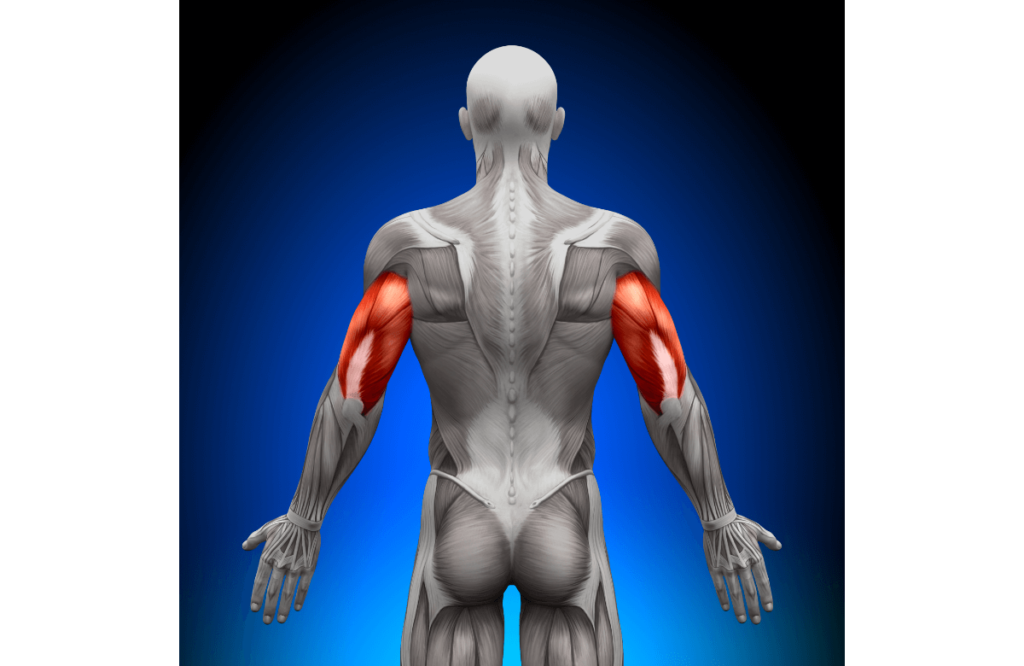
The trapezius muscle, which runs down the back of the neck and upper spine, is activated to a certain extent during the Seated Arnold Press, primarily in its upper portion. It helps stabilize the shoulder girdle and assists in the pressing movement.
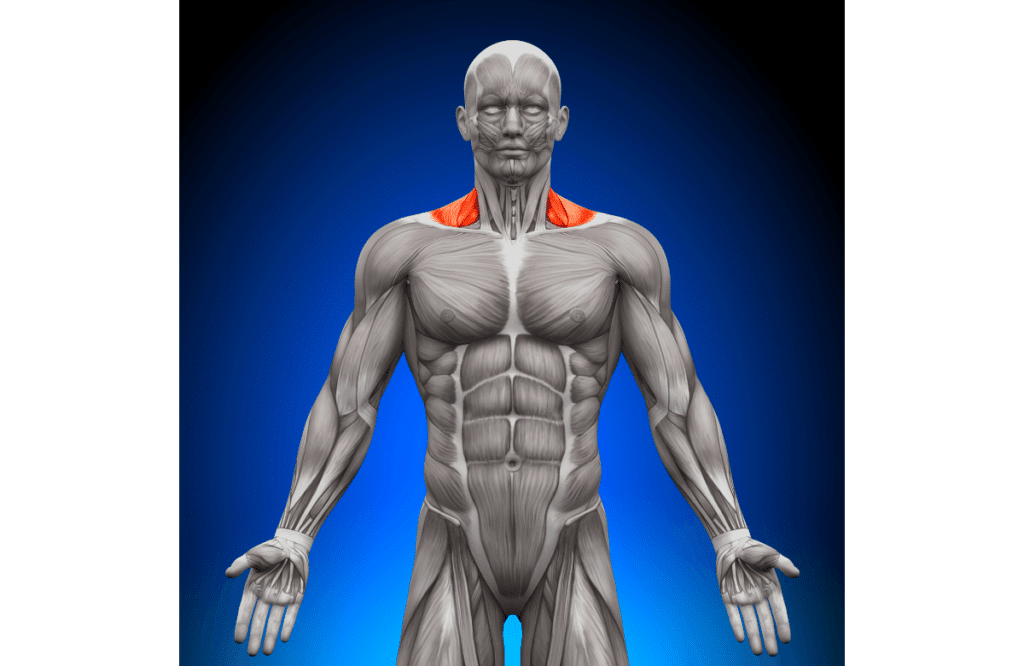
What Are the Benefits?
Like other overhead lifts, the Arnold Press can help you build broader shoulders. Compared to similar dumbbell variations, the Arnold Press targets the entire shoulder muscle and doesn’t require heavy loads.
Targets The Entire Shoulder Muscle
The traditional dumbbell shoulder press primarily engages the anterior and lateral delts. On the other hand, the Arnold Press incorporates rotation and engages the rear delts.
It’s a dynamic shoulder exercise, helping with mobility in the shoulder joints and building broad shoulders.
The starting position of the Arnold Press requires the elbows to be in front of the body. As you raise the dumbbells overhead, you move them away from the midline of your body. This outward movement of the elbows is known as horizontal abduction of the shoulder.
By performing this action, you specifically target and engage the rear deltoid muscles alongside the triceps and trapezius muscles.
Greater Range of Motion
In conventional shoulder presses, the weights are usually lowered to chin level or until they reach the tops of the shoulders.
However, in the Arnold Press, you not only bring the dumbbells down to the shoulders or slightly lower, but you also rotate your hands so that your palms face your face at the bottom position.
This rotational movement expands the range of motion during the exercise. By increasing the range of motion, you engage a broader set of muscles. As a result, you can achieve highly effective workouts while using less weight compared to the overhead press.
Fewer Weight Requirements
Many lifters utilize heavier loads on traditional pressing movements, like the overhead barbell variation. Heavyweights at lower rep ranges can help develop upper body strength but may not improve muscle size as lower weights in higher rep ranges.
The Arnold Press can be performed using lighter loads for more reps, around 8–12 or 10–15 reps.
This can be beneficial for improving form, increasing muscle endurance, and breaking through plateaus in other lifts. It’s also helpful if you have a limited amount of equipment and can’t access heavier dumbbells.

Alternative Shoulder Press Exercises
An effective shoulder routine will include multiple variations to help you develop maximum strength and size. The Arnold Press targets the entire shoulder muscles but isn’t enough on its own. Here are some effective lifts to incorporate into your hypertrophy training program.
Standing Arnold Press
Let’s start with the obvious variation, the Standing Arnold Press. This lift follows the exact movement path of the seated Arnold Press, but you’re standing up. What’s the benefit of standing?
Standing pressing variations require more core strength, engaging more supporting muscles, and having a higher carry-over to daily activities and sports.
It can provide you with a strong foundation if you decide to move into competitions like powerlifting or CrossFit. It’s worthwhile to incorporate into your routine, especially if you regularly perform the seated Arnold Press.
Half-Kneeling Arnold Press
Half-kneeling variations are often overlooked for seating or standing options but can be a great addition to your training regimen.
The Half-Kneeling Arnold Press provides you with an additional point of contact with the ground and will highlight any errors in your form. It uses more core strength and can open up the glutes and hip flexors.
Half-kneeling variations are also helpful if you have lower back pain, as it’s more difficult to compensate with the lower back muscles from this position.
Single-Arm Arnold Press
Another variation with the same movement path is the Single-Arm Arnold Press. As the name suggests, you train one shoulder at a time with this exercise.
It’s a unilateral movement that can correct muscle imbalances and asymmetries. The Single-Arm Arnold Press can also require more core strength, decrease the risk of a shoulder injury, and promote more muscle stimulation.
Smith Machine Single-Arm Shoulder Press
The Smith Machine Single-Arm Shoulder Press is a unilateral movement, meaning it engages one arm at a time. This provides a greater range of motion, helping you gain strength and flexibility while addressing any asymmetries or imbalances.
Dumbbell Shoulder Press
The DB Shoulder Press allows you to use heavier loads compared to the Arnold variation, as you don’t rotate the palms. It won’t target the rear delts, but you can engage the anterior and lateral deltoids.
You can perform the Dumbbell Shoulder Press on a flat bench, at an incline, or standing straight up, allowing for more variety and muscle recruitment.
Barbell Shoulder Press
The Barbell Shoulder Press is a fundamental movement for building size and strength in the shoulders. It targets the same muscles as the dumbbell variation, including the front and side delts, triceps, and traps.
The standing Barbell Shoulder Press is part of many fitness competitions, including powerlifting, CrossFit, and Strongman. It also translates well to Olympic movements, like the snatch and clean and jerk.
The standing variation will use more core strength and supporting muscles, but the seated and incline variations have benefits as well.
Dumbbell Lateral Raises
One of the main advantages of the Arnold Press is that it targets the front, side, and rear delts.
However, you can use accessory lifts to isolate the different heads of the deltoid muscle.
The Dumbbell Lateral Raise will engage the side delts, helping you develop shoulder mass and mobility. You can use a cable machine, which provides constant time under tension, helping you create more muscle endurance.
Dumbbell Front Raises
Just like lateral raises, Dumbbell Front Raises can isolate the anterior deltoid. It will help you develop fuller shoulders, providing you with more stability and mobility. This movement can also be performed on a cable machine, seated, with a kettlebell, or at an incline.
Rear Delt Flys
To engage the rear or posterior delts, try the Rear Delt Fly. It’s an accessory lift that primarily targets the rear delts but uses several muscles in the upper body, including the traps, rhomboids, and triceps.
Rear Delt Flys can be performed with dumbbells, cable machines, kettlebells, or resistance bands. There are numerous variations, including sitting, standing, unilateral, and incline options.
Common Mistakes to Avoid
Like any other exercise, there are common pitfalls to avoid when learning the Arnold Press movement. Mistakes are par for the course but can increase the chance of injury and be less effective for developing muscle mass.
Loading Too Much Weight
Many lifters use heavy weights for overhead pressing movements, so it’s tempting to do the same for the Arnold Press. However, it’s better to use a lighter weight similar to what you would use for conventional dumbbell presses.
Heavier loads can increase the chance of injury or strain, as the Arnold Press has additional wrist rotation. Instead, use weights you can lift comfortably for 8–12 reps or 10–15 reps.
Not Using Enough Weight
It’s also possible to use light weights when performing the Arnold Press, resulting in fewer muscle gains.
It’s critical to use a weight range where you approach failure near the end of your sets and reps. If you still have gas in the tank at the end of the reps or sets, you’ll likely need to increase the weight.
If you aren’t sure what weight to use, experiment with different weights at the 8–12 rep range or 10–15 to see what’s challenging or too easy.
Not Enough Rotation
The Arnold Press requires you to rotate the wrist. Otherwise, it’s just a standard dumbbell overhead press.
Using weights that are too heavy or rushing through the movement won’t activate all three heads of the deltoids. Instead, focus on the action and ensure you’re rotating your wrists correctly.
Doing so ensures you’re getting all the benefits of the Arnold Press variation.
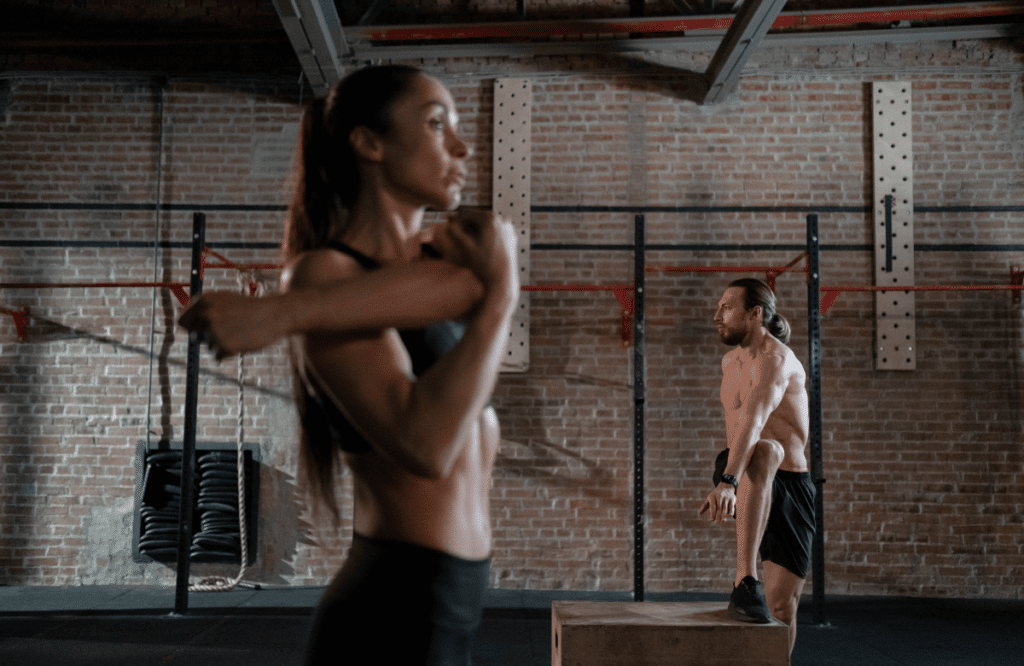
Forgetting to Warm-Up
The shoulder joint is highly complex and has the most range of motion, making it have the highest chance of instability or injury. Warming up is critical to avoid a potential shoulder injury or strain.
A proper shoulder warm-up will get your muscles warm, loosen up the joints, and remove stiffness. There are several warm-ups you can employ, including some of the following:
- YTWs
- Cross-Body Shoulder Stretch
- Alternating Chest Hugs
- Straight Arm Circles
- One Forwards and One Backwards
- Rolling Shoulder Circles
You can also incorporate banded movements to stretch your muscles further. It’s also worthwhile to warm up to your working weight by performing a few reps with lighter weights. This way, you can avoid any mistakes with your form and prepare for your working set.
Frequently Asked Questions (FAQ)
What Does the Seated Arnold Press Work?
The Seated Arnold Press primarily targets the front, side, and rear deltoids. It also utilizes the triceps and trapezius muscles. It’s an effective shoulder exercise, as it targets the entire shoulder muscle compared to traditional pressing movements.
Is the Seated Arnold Press Effective?
Yes, the Seated Arnold Press is effective and was utilized by one of the best bodybuilders in history, Arnold Schwarzenegger. It targets all three heads of the deltoids, which makes it a time-efficient movement to incorporate into your routine. It’s useful as an accessory movement alongside other shoulder exercises.
What’s the Difference Between Arnold Press and Regular Shoulder Press?
The Arnold Press and the traditional Shoulder Press use the same muscle groups. That said, the Arnold variant uses additional shoulder rotation, allowing you to engage the rear delts. You can use more weights with the conventional Shoulder Press, and it has more carry-over to competitions and Olympic lifts.



